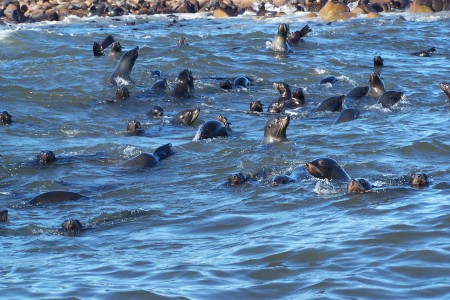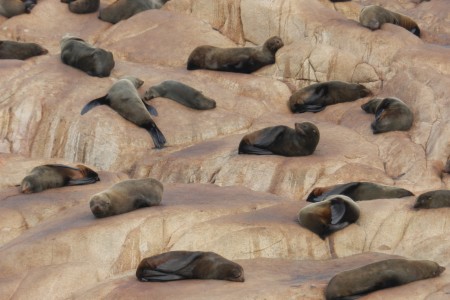One of the great attractions of the visit to the Cabo Polonio National Park, in Rocha, east of Uruguay, is the sighting of a large colony of sea lions in their natural habitat. They tend to be on the rocks near the Cabo Polonio Lighthouse, and at the time of parturition the females take shelter with their young in the nearby islands.
Sea lions have been there since ancient times, perhaps since the Pleistocene (a million years ago), as the remains found seem to indicate. The indigenous tribes probably used their skins as clothing and fed on their flesh. In the coastal areas close to the herds of sea lions, a large scraper type has been found, which was not manufactured by the natives of other areas, and which may have served to skin the sea lions.
Mating and breeding season
At the end of December the males form harems with groups of one to fifteen females. By rapid movements towards their limits, and if necessary by pushing or biting, they defend their territory. Those who do not form a couple meet as a group and the youngest are engaged in hampering the reproductive activities of adults
In the breeding season (summer months), the colonies are extremely noisy. Mothers and children are recognized by the sounds they emit.
The Uruguayan herds are formed by two species that coexist in harmony: the South American fur seal, (or fine sea lion), and South American sea lion (ordinary sea lion).
South American fur seal

The South American fur seal is provided with an outer layer of the bristle type and a deeper one with a softer coat. The male is gray and has a small mane. It usually reaches two meters long and weighs up to 140 kilos. The female is smaller and weighs less.
South American sea lion

The South American sea lion has a unique layer of stiff and rather rough hair. The male is distinguished by his mane that has earned him the nickname of "wig". It is larger than the South American fur seal, the males measure around 2.50 meters and weigh up to 340 kilograms. The females meanwhile, are around two meters long and 140 kilograms of weight.








